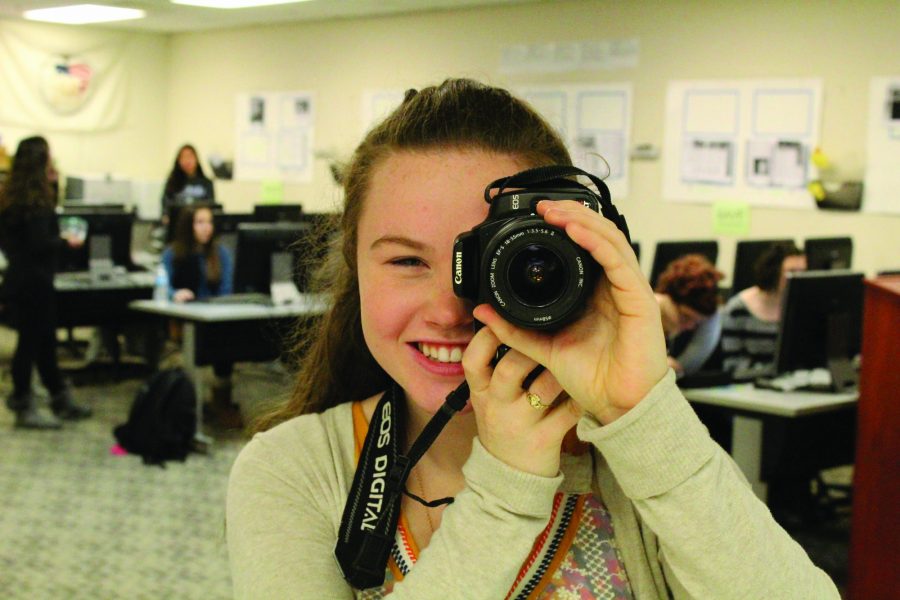What it takes to be a high school journalist
One family. Two publications. Twelve staff members. Dozens of area, regional and national awards. And an audience of 1,938.
“You fight [until] the end and you do not just sit around and complain about something you do not agree with. You go and get it done and figure out why something is the way it is,” Meggie Furlong, junior social media manager for Bear Facts Student Media, said. “Standing up for what you believe in is something important.”
The job of Bear Facts Student Media is to make a twenty-four page magazine five times every school year. They inform and present their readers with current and local news, the latest sports coverage, student stories about life in Lake Zurich, and in-depth articles on controversial topics.
“Although we are all working on individual stories, it is kind of like a team effort, because if one person is behind on their story, it will affect the whole production,” Chloe Faris, sophomore staff writer, said. “Bear Facts has really helped me become a better writer. Before [I was on Bear Facts], I loved creative writing, but now I am doing lots of different types of writing. I am really outgoing now because I can go up to people and interview them.”
Just like Faris, Furlong says she has stepped outside her comfort zone by enjoying the opportunities she would not have experienced without Bear Facts. She can be found on the sideline of every football game, tweeting and taking pictures.
“[Being on Bear Facts] makes you really outgoing because as a reporter you can not just stand by an event and watch,” Jim Weimer, senior staff writer, said. “You have to get involved and get close up. Like one time I interviewed union workers with the giant rat on the side of the road. They were really cool people actually, but the rat was kind of scary. Everyone was driving by and watching me interview these angry union workers next to a giant, red-eyed, evil rat.”
It takes more skills than just being outgoing to be successful on Bear Facts. Communication skills are also huge, according to Furlong. For her, it used to be that she was afraid to talk to someone for an interview, but now she can just walk in and have a conversation, she said.
“Just going up into crowds and going up to people and knowing you are the odd one out because you have a camera and a press pass,” Weimer said. “Asking people questions and getting their story is what I used to struggle with.”
With two publications to keep up with, Bear Facts members have their strong points and their weak points and always have to support each other. According to Faris, the process of Bear Facts production moves very quickly. During the first week, writers get into their magazine sections and brainstorm ideas for the story they want to write for the next issue. After all the interviews and writing, the first draft is due on a certain deadline to the editors.
“For me (the hardest part) would be meeting deadlines,” Faris said. “I try really hard not to get off schedule or miss any deadlines for web or print, so I just try to keep track of everything in a calendar and I try to work ahead of deadlines.”
According to Furlong, the staff has to help each other with their weaknesses to make the magazine and to keep updating their website. This comes with putting in all of their effort, getting all the pieces they need for their story, and hitting deadlines.
“You really need to realize that other people know more than you, and it is never an individual [effort],” Furlong said.
Finally while designing, the staff also has to write a biweekly story for the website, LZBearFacts.com, but according to Faris, working in this fast-paced environment has helped her grow and become a better journalist for Bear Facts.

Julia is Bear Facts Student Media's Business Manager and will be leaving LZHS in January to start college. Her favorite activities include taking naps...


